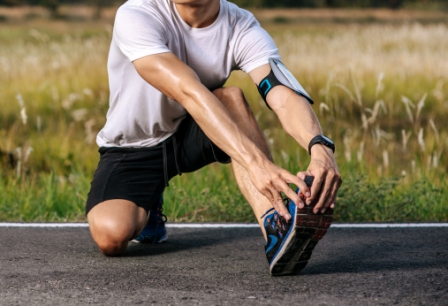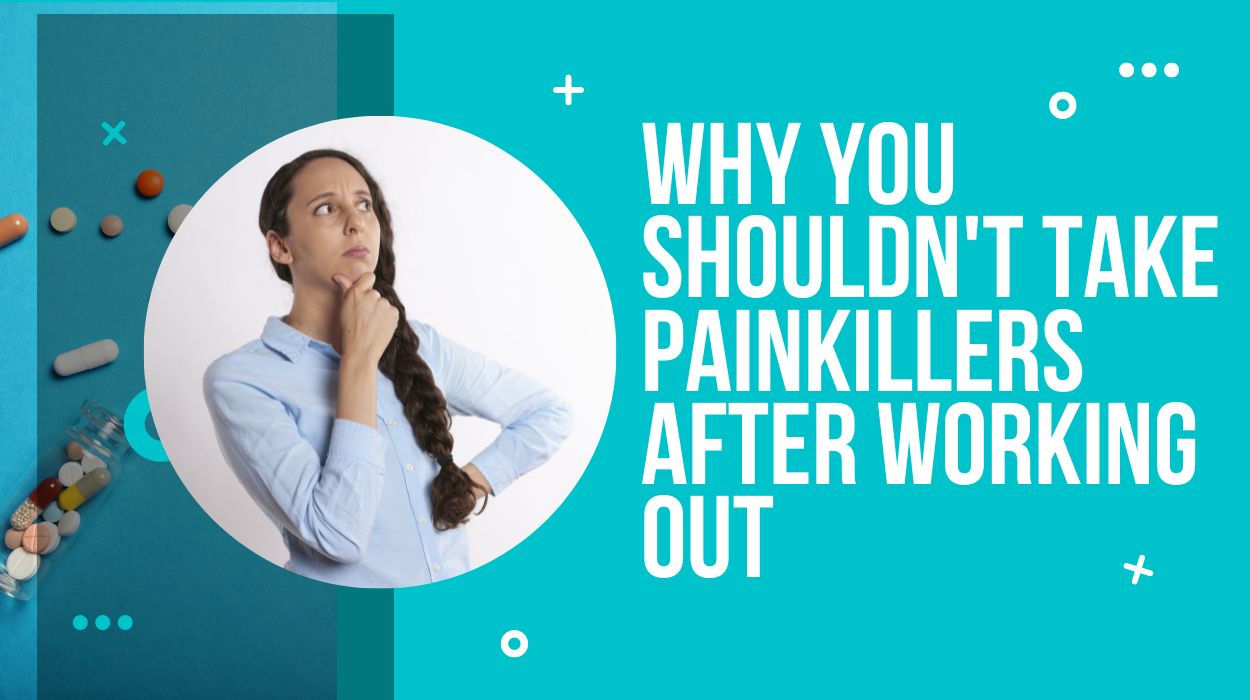Workouts are a great way to keep yourself fit. However, while beginning their fitness journey, people do not consider the sore muscles and body aches that follow.
Sometimes, the pain could be so excruciating that you want to take one painkiller to help you get through the day, if not alleviate your discomfort for good – but is this the right thing to do?
As you continue reading this article, you will learn why you should not take painkillers after working out, along with some alternatives to deal with sore muscles effectively.
The downsides of taking painkillers after a workout

Let us first understand what happens to your body after a workout!
Your muscles begin to work more than their usual capacity whenever you exercise. They undergo more physical stress than what your body is used to, which causes the muscles to feel sore the following morning. This ache is also known as DOMS – Delayed Onset of Muscle Soreness.
However, the muscles in your body get used to the soreness and can handle the pain effectively over time.
But why does this even happen in the first place?
The body consists of numerous nerves that have nerve endings. You feel any sensation in your body because of the neurotransmitters that carry information to the brain in the form of chemicals.
Fun Fact: Despite the nervous system carrying signals and messages to your brain, the brain itself cannot feel any sensation. Your brain only reacts to the information received.
Whatever your body goes through is a sign of anatomical development and progress, provided you are not overworking yourself. So, when your muscles are sore and in pain, your body is releasing a chemical called “prostaglandins.” Upon the successful release of prostaglandins, your body begins to heal gradually.
However, these nerve endings are highly sensitive to this chemical. Hence, the soreness may get uncontrollable and out of hand, primarily when your body does not have enough exposure to such intense physical exertion.
Why is this a bad thing?
Taking a painkiller to subside the effects of DOMS is a non-recommended suggestion for three primary reasons –
1. Your brain would not receive signals.
The pain you experience after an intense workout is “good pain.” Your body and muscles require that pain from all the lactic acid build-up so it can heal naturally.
When you take a painkiller like ibuprofen or acetaminophen, your brain gradually loses its ability to release prostaglandins.
When your brain can no longer secrete the required hormones, your muscles cannot heal by default since these painkillers reduce inflammation in your muscles necessary for healing. Moreover, your brain will not know or understand the muscle ache, especially when needed.
In other words, the entire healing process will slow down to a point where your brain will shut off from all the pain you should be experiencing to heal.
Since the brain can not feel pain itself, it can not differentiate good from bad pain. In turn, this adversely affects your body’s natural healing process.
2. Your muscles and body are likely to develop dependence.
Once you start taking painkillers to alleviate muscle pain and body soreness, you might develop a strong urge to continue taking them. In turn, you may also make it a habit to take a pill when you can not handle the after-effects of workouts.
However, painkillers carry more risks than benefits. While you are already risking your heart and kidney functions, long-term usage of painkillers can also lead to muscle spasms.
(Author’s Note: In rare cases, you might develop an addiction to painkillers due to the chemicals they contain that slow down the neural processes. However, if you find yourself consuming painkillers every day, it is highly advisable to visit a doctor at the earliest.)
3. Painkillers may reduce muscle gains and bone health.
While this is not a significant reason, muscle gains do play an essential role in the overall strengthening of your body.
A study also suggests how taking painkillers may adversely impact the protein formation in your body after an intense workout session. Another study shows how these medicines can stunt bone healing.
Healthier alternatives to deal with sore muscles

Now that you have understood the grave adversities and side effects of consuming painkillers after exercising, let us look at the suitable ways of dealing with and alleviating muscle soreness and body ache.
1. Continue exercising in moderation
Once you start exercising, it is necessary to keep the momentum up and running so your body can heal more efficiently. If the pain is unbearable, you may want to take it a little easy.
Since your muscles are already working on getting used to the extra physical exertion you are putting on them, continuing exercises and workouts will allow them to handle the pain effectively.
2. Always do warm-up and cooling down exercises

As much as the exercise routine in itself is necessary, your body will experience shocks and jerks if you do not warm up properly.
Warm-ups reduce the risk of injuries and muscle spasms. They provide flexibility and agility for strength training. Moreover, it also raises your heart rate for a good cardio session.
Cooldowns help your heart rate and body return to a state of normalcy. They play a crucial role in muscle recovery as well.
You May Also Like To Read:
Best Pre-Workout Supplement in India
The Final Takeaway!
Following an intense exercise routine requires a lot of aftercare, mainly when your body cannot initially handle high levels of physical exertion. While taking a painkiller may seem the easy way out, it is more detrimental than beneficial.
Warning: You must take painkillers at the sole discretion of a medical expert or certified doctor.
If you have further questions, thoughts, or advice missing from this article, please mention them in the comments section below.
Feel free to share this article with your friends, family, or anyone you know who would benefit from this information.
While we continually update our page with more insightful and in-depth posts, make sure you stay connected for future updates!


